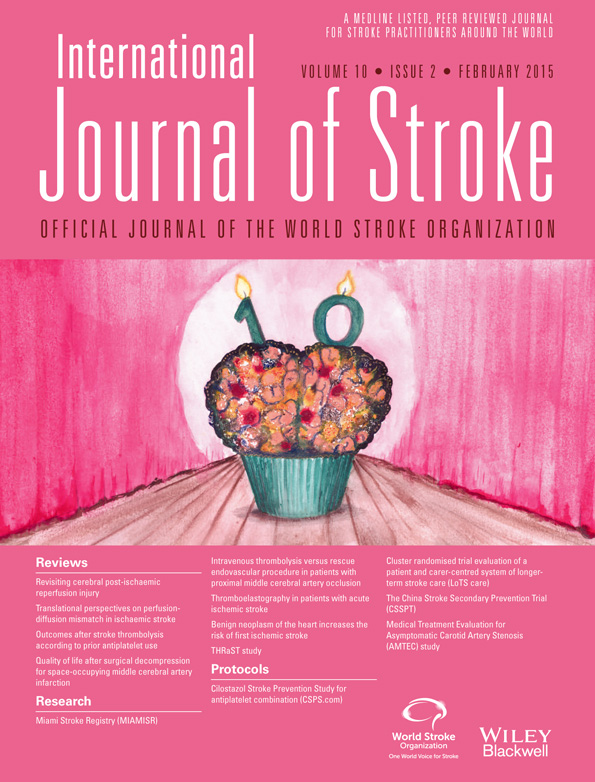Thromboelastography in patients with acute ischemic stroke
Abstract
Background
Thromboelastography measures the dynamics of coagulation. There are limited data about thromboelastography in acute ischemic stroke other than a single study from 1974 suggesting that acute ischemic stroke patients are hypercoagulable. There have been no studies of thromboelastography in the thrombolytic era despite its potential usefulness as a measure of clot lysis. This study was designed to provide initial thromboelastography data in stroke patients before and after tissue plasminogen activator therapy and to provide the necessary preliminary data for further study of thromboelastography's ability to identify clot subtype and predict response to tissue plasminogen activator therapy.
Methods
All acute ischemic stroke patients presenting between 11/2009 and 2/2011 eligible for tissue plasminogen activator therapy were screened and 56 enrolled. Blood was drawn before (52 patients) and 10 mins after tissue plasminogen activator bolus (30 patients). Demographics, vitals, labs, 24 h National Institutes of Health Stroke Scale, and computed tomography scan results were collected. Patients were compared with normal controls.
Results
Acute ischemic stroke patients had shorter R (4·8 ± 1·5 vs. 6·0 ± 1·7 min, P = 0·0004), greater α Angle (65·0 ± 7·6 vs. 61·5 ± 5·9°, P = 0·01), and shorter K (1·7 ± 0·7 vs. 2·1 ± 0·7 min, P = 0·002) indicating faster clotting. Additionally, a subset formed clots with stronger platelet-fibrin matrices. Treatment with tissue plasminogen activator resulted in reduction in all indices of clot strength (LY30 = 0 (0–0·4) vs. 94·4 (15·2–95·3) P < 0·0001); however, there was considerable variability in response.
Conclusions
Thromboelastography demonstrates that many acute ischemic stroke patients are hypercoaguable. Thromboelastography values reflect variable clot subtype and response to tissue plasminogen activator. Further study based on these data will determine if thromboelastography is useful for measuring the dynamic aspects of clot formation and monitoring lytic therapy.




